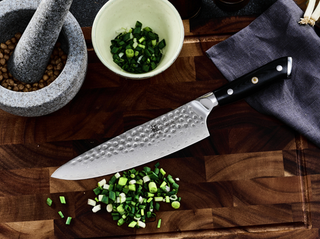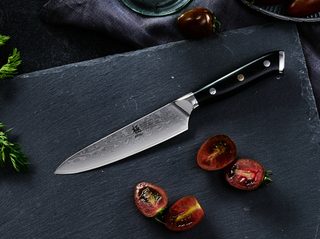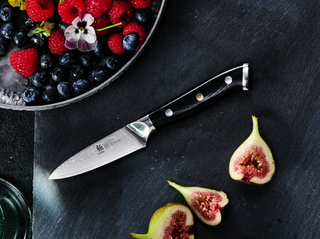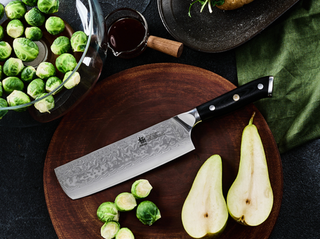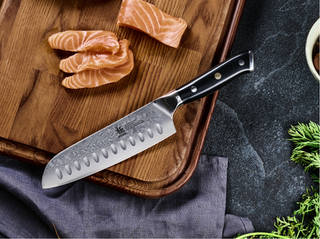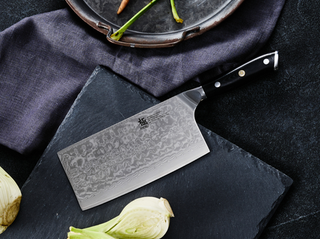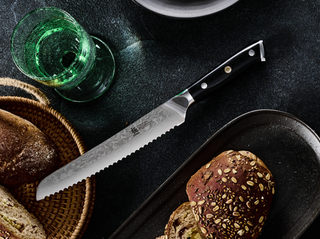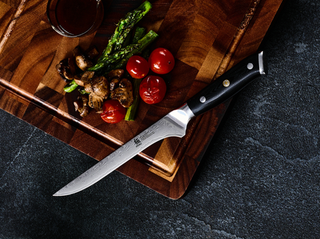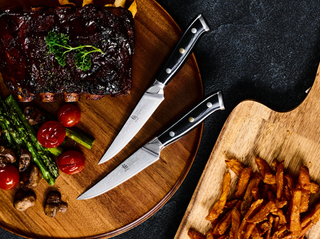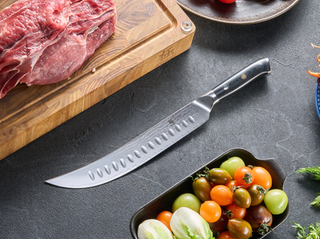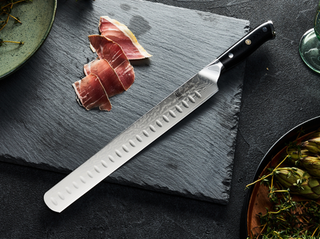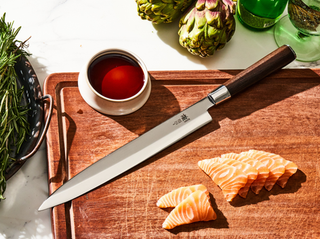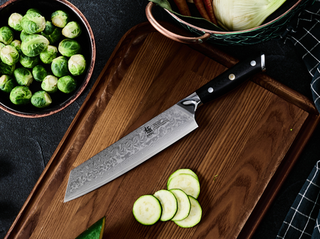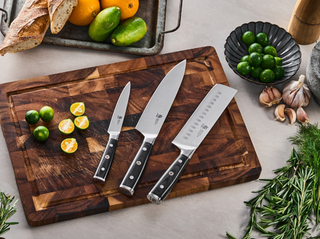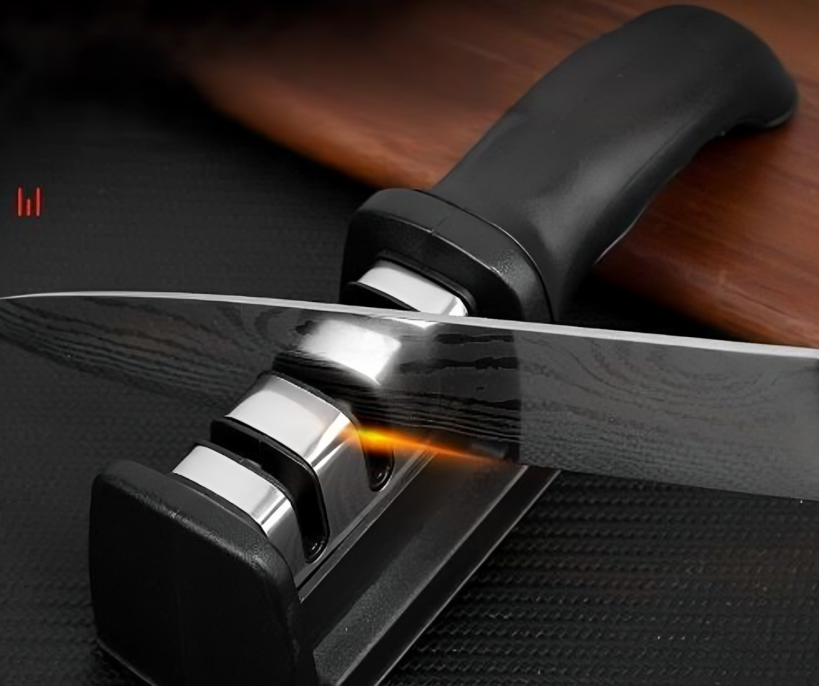Dull knives can turn cooking from a joy to a chore. You aim for perfectly sliced vegetables and end up with a mushy mess. It's frustrating and can even be dangerous. That's why finding the best knife sharpener is crucial for any kitchen, whether you're a professional chef or a home cooking enthusiast.
But with so many options out there, choosing the right sharpener can feel like navigating a culinary maze. That's where we come in. We've put countless blades to the test to bring you the four best kitchen knife sharpeners of 2024.
Why Knife Sharpeners Matter
Before we dive into our top picks, let's talk about why having a good knife sharpener is so important:
- Safety: Sharp knives are actually safer than dull ones. They require less force to cut, reducing the risk of slips and accidents.
- Efficiency: A sharp knife makes food preparation faster and easier. You'll spend less time struggling with tough ingredients and more time enjoying your culinary creations.
- Food Quality: Sharp knives make cleaner cuts, preserving the texture and appearance of your ingredients. This can make a big difference in both taste and presentation.
- Knife Longevity: Regular sharpening extends the life of your knives, saving you money in the long run.
Choosing Between Manual and Electric Knife Sharpeners
When it comes to knife sharpeners, you generally have two main categories to choose from: manual and electric. While electric knife sharpeners can be convenient, many chefs still choose to stick with manual sharpeners. Here's why you might prefer manual options:
- Cost: Generally, quality manual sharpeners are more affordable than their electric counterparts.
- Noise Level: Manual sharpeners are much quieter, making them more pleasant to use in a home kitchen.
- Control: Manual sharpeners give you more control over the sharpening process, allowing for more precise results.
- Versatility: Many manual sharpeners can handle a wider variety of knife types and sizes.
- Learning Curve: Learning how to use a knife sharpener manually can improve your overall knife skills and understanding.
Our Top 4 Best Knife Sharpeners for 2024
After extensive testing, we've narrowed down the options to these four outstanding sharpeners:
- Honing Steel
- Sharpening Whetstone
- Rolling Knife Sharpener
- 3 Slot Knife Sharpener
Each of these sharpeners brings something unique to the table. Some are perfect for quick touch-ups, while others are ideal for those who enjoy the meditative process of careful blade maintenance.
Detailed Look at Our Top Picks
Now, let's dive deeper into each of our selected best knife sharpeners to help you find the perfect match for your kitchen needs.
1. Honing Steel: Your Knife's Daily Tune-Up

Think of a honing steel as your knife's personal trainer. It keeps blades in top shape between major sharpening sessions.
Why Choose a Honing Steel?
- Quick fix: Realign your blade in seconds.
- Extend sharpness: Keep knives cutting well for longer.
- Protect your investment: Less frequent sharpening means longer-lasting knives.
How It Works: Knives don't just get dull. They get bent out of shape - literally. Honing steels straighten those microscopic bends. No metal removed, just realigned.
When to Use:
- Daily, before or after knife use
- When your knife starts to feel less sharp
- In busy kitchens where speed matters
Kyoku’s 8’’ Honing Steel: Our 8" steel from the Kyoku Daimyo Series features:
- Durable carbon steel rod
- Comfortable rosewood handle
- Fits most kitchen knives
Remember: Honing maintains. It doesn't replace sharpening. Use it often to keep your edge, but sharpen when honing no longer does the trick.
2. Sharpening Whetstone: The Purist's Choice

Whetstones have been the go-to sharpening tool for centuries, and for good reason. They offer unparalleled control and versatility, making them ideal for those who take their knife care seriously.
Why Choose a Whetstone?
- Precision: Whetstones allow you to control the exact angle of sharpening, crucial for maintaining different types of knives.
- Versatility: From kitchen knives to outdoor tools, a whetstone can sharpen almost any blade.
- Longevity: With proper care, a quality whetstone can last for years, making it a cost-effective choice.
How Whetstones Work: Whetstones use abrasive particles to gradually remove metal from the blade, creating a sharp edge. The process typically involves two steps:
- Coarse grit (like 1000) reshapes and sharpens dull or damaged edges.
- Fine grit (like 6000) refines and polishes the edge for a razor-sharp finish.
When to Choose a Whetstone:
- For high-end knives: Premium knives benefit from the precise control whetstones offer.
- If you enjoy the process: Sharpening with a whetstone can be meditative and satisfying.
- For varied knife collections: One whetstone can sharpen different blade types and sizes.
Kyoku’s Whetstone Kit Features:
- Dual-sided stone (1000/6000 grit) for complete sharpening
- Large 30.6 square inch surface accommodates various knife sizes
- Non-slip base for safe, stable sharpening
While whetstones require more skill and time than other methods, they offer unmatched results for those willing to learn. If you value precision and enjoy hands-on maintenance, a whetstone kit like Kyoku's could be your ideal sharpening solution.
3. Rolling Knife Sharpener: Effortless Edge Perfection

Rolling sharpeners are the new kids on the block. They're changing how we think about knife maintenance.
Why Choose a Rolling Sharpener?
- Foolproof: Perfect for beginners.
- Consistent results: Takes guesswork out of angles.
- Quick and easy: Sharpen in seconds, not minutes.
How It Works:
- Place your knife in the guide.
- Roll the sharpener back and forth.
- Let physics do the work for you.
The rolling motion and fixed angle ensure even sharpening every time.
When to Use:
- If you're new to knife sharpening
- When you need quick results
- For maintaining a variety of kitchen knives
Kyoku's Rolling Sharpener: This model features:
- Diamond abrasive discs for efficient sharpening
- Magnetic base for stable, safe use
- 15-degree angle guide for optimal edge
Perfect for: Home cooks who want sharp knives without the learning curve.
Remember: While easy to use, rolling sharpeners may not offer the precision of whetstones for high-end knives.
4. 3-Slot Knife Sharpener: The All-in-One Solution

Think of 3-slot sharpeners as a spa treatment for your knives. They offer a complete sharpening experience in one compact tool.
Why Choose a 3-Slot Sharpener?
- Comprehensive: Repairs, sharpens, and polishes in one go.
- User-friendly: Simple design for easy use.
- Versatile: Works for most kitchen knives.
How It Works:
- Slot 1: Repairs and straightens damaged blades.
- Slot 2: Sharpens and restores the blade's V-shape.
- Slot 3: Polishes for a smooth, sharp finish.
Each slot does a specific job, ensuring a thorough sharpening process.
When to Use:
- For regular maintenance of kitchen knives
- When you need quick results
- If you're new to knife sharpening
Kyoku’s 3-Slot Sharpener: Our model features:
- Ambidextrous design for left and right-handed users
- Compact size for easy storage
- Non-slip base for safe sharpening
Perfect for: Home cooks who want an all-in-one sharpening solution without the fuss.
Remember: While convenient, 3-slot sharpeners may not offer the fine control needed for high-end or specialized knives.
How to Choose the Best Knife Sharpener for You
Selecting the right sharpener depends on several factors:
- Skill Level: If you're new to knife sharpening, a foolproof option like the 3 Slot or Rolling sharpener might be best. For those with more experience, a whetstone offers more control.
- Time and Effort: Consider how much time you're willing to spend on sharpening. The honing steel is quick for daily touch-ups, while the whetstone requires more time but offers precision.
- Types of Knives: Ensure the sharpener you choose is compatible with the knives you own. Some work better with certain blade types or materials.
- Frequency of Use: If you cook often and need frequent sharpening, a convenient option like the rolling sharpener might be ideal.
- Budget: While all these options offer good value, prices can vary. Consider what you're willing to invest in knife maintenance.
Remember, the best kitchen knife sharpener is one that you'll use regularly. Consistent maintenance is key to keeping your knives in top condition.
Wrapping Up: Keep Your Edge in the Kitchen
Sharp knives are kitchen heroes. They make cooking safer, faster, and more fun. No more squashed tomatoes or uneven cuts. The right sharpener changes everything.
Let's recap our top picks:
- Honing Steel: Your daily knife tune-up.
- Whetstone: For precision and control.
- Rolling Sharpener: Easy, consistent results.
- 3-Slot Sharpener: All-in-one convenience.
Each sharpener has its strengths. Choose based on your needs and skills.
Ready to level up your knife care?
- Assess your kitchen needs. What types of knives do you use most?
- Consider your sharpening experience. Beginner or pro?
- Think about time. Quick touch-ups or dedicated sharpening sessions?
Take action now:
- Explore Kyoku’s full range of sharpeners.
- Visit our chef blog for expert tips on knife care and sharpening techniques.
- Read our detailed product descriptions to find your perfect match.
- Check out customer reviews to see real-life experiences with our sharpeners.
Don't let dull knives hold you back. Sharper knives mean better cooking. Choose your perfect sharpener today and taste the difference tomorrow!
